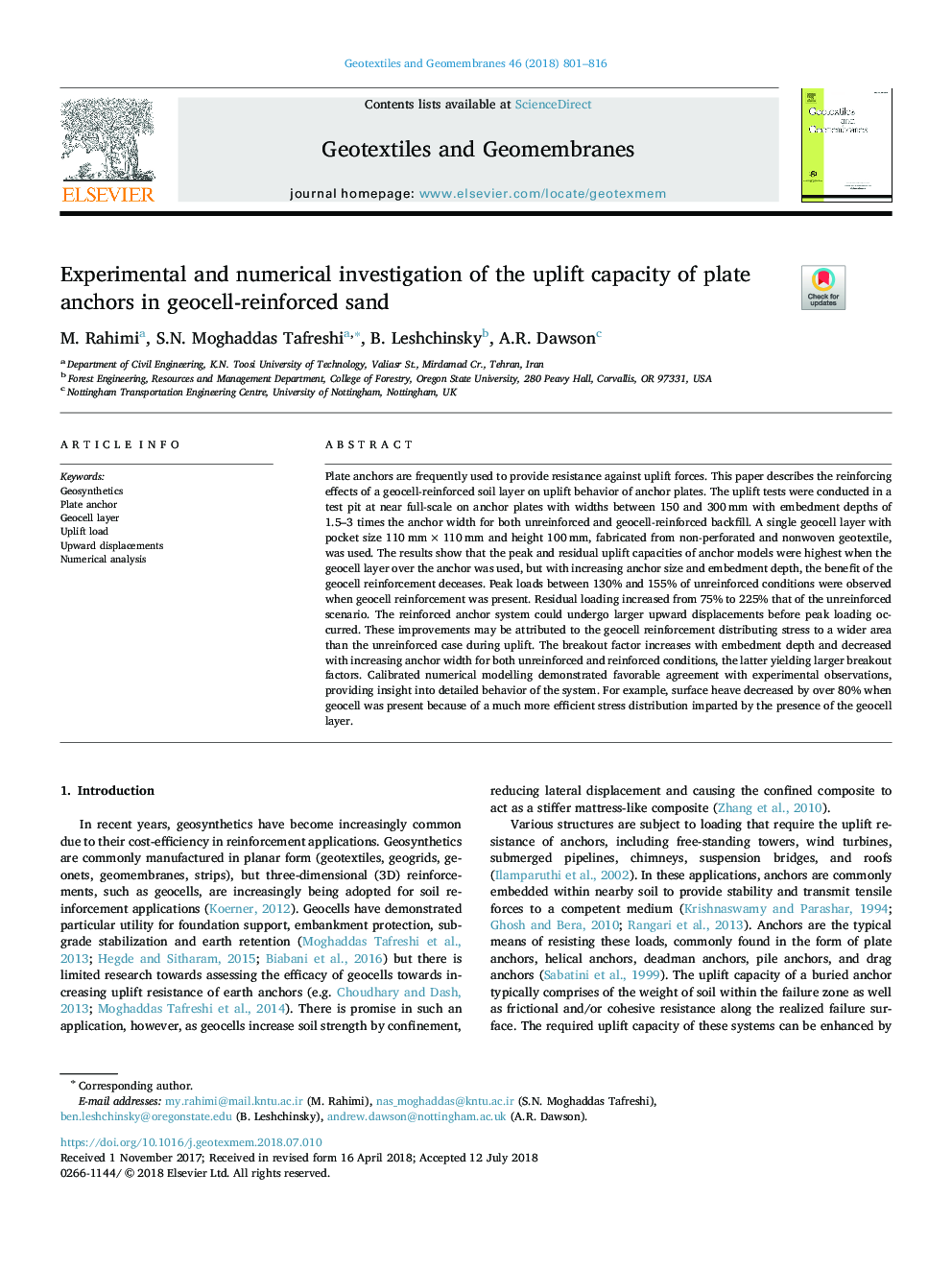| Article ID | Journal | Published Year | Pages | File Type |
|---|---|---|---|---|
| 6746795 | Geotextiles and Geomembranes | 2018 | 16 Pages |
Abstract
Plate anchors are frequently used to provide resistance against uplift forces. This paper describes the reinforcing effects of a geocell-reinforced soil layer on uplift behavior of anchor plates. The uplift tests were conducted in a test pit at near full-scale on anchor plates with widths between 150 and 300â¯mm with embedment depths of 1.5-3 times the anchor width for both unreinforced and geocell-reinforced backfill. A single geocell layer with pocket size 110â¯mmâ¯Ãâ¯110â¯mm and height 100â¯mm, fabricated from non-perforated and nonwoven geotextile, was used. The results show that the peak and residual uplift capacities of anchor models were highest when the geocell layer over the anchor was used, but with increasing anchor size and embedment depth, the benefit of the geocell reinforcement deceases. Peak loads between 130% and 155% of unreinforced conditions were observed when geocell reinforcement was present. Residual loading increased from 75% to 225% that of the unreinforced scenario. The reinforced anchor system could undergo larger upward displacements before peak loading occurred. These improvements may be attributed to the geocell reinforcement distributing stress to a wider area than the unreinforced case during uplift. The breakout factor increases with embedment depth and decreased with increasing anchor width for both unreinforced and reinforced conditions, the latter yielding larger breakout factors. Calibrated numerical modelling demonstrated favorable agreement with experimental observations, providing insight into detailed behavior of the system. For example, surface heave decreased by over 80% when geocell was present because of a much more efficient stress distribution imparted by the presence of the geocell layer.
Related Topics
Physical Sciences and Engineering
Earth and Planetary Sciences
Geotechnical Engineering and Engineering Geology
Authors
M. Rahimi, S.N. Moghaddas Tafreshi, B. Leshchinsky, A.R. Dawson,
